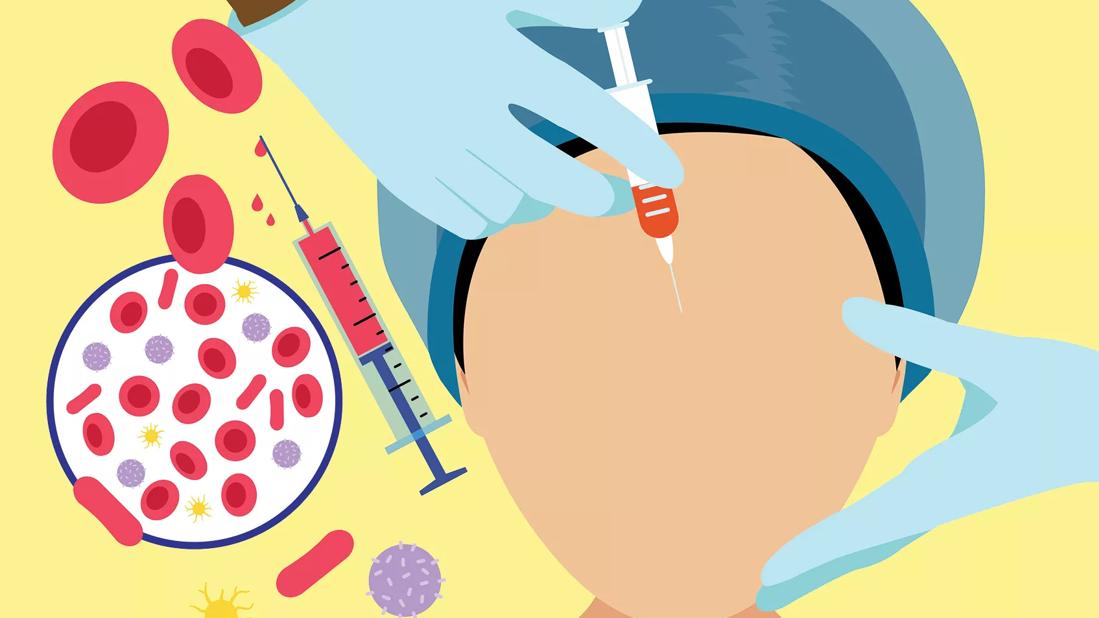The treatment triggers collagen production by using your own blood

Hoping to minimize your facial lines and wrinkles? If you don’t want surgery, there are other options.
Advertisement
Cleveland Clinic is a non-profit academic medical center. Advertising on our site helps support our mission. We do not endorse non-Cleveland Clinic products or services. Policy
One approach, the plasma-rich protein (PRP) facial — also known as a “vampire” facial” — combines plasma and platelets from your blood with other rejuvenation techniques.
“It triggers collagen production by stimulating the body’s natural wound healing response,” says dermatologist Shilpi Khetarpal, MD. “Collagen is the latticework of the face, so a PRP microneedling treatment helps improve skin texture and tone.”
Here’s what you need to know about PRP facials.
PRP facials are medical, rather than cosmetic procedures. Your medical team first takes a small amount of your blood.
Then, they spin it in a centrifuge to extract protein-rich plasma. Next, they extract platelets. Finally, they concentrate the sample, creating what is called platelet-rich plasma (PRP).
While dermatologists recently started using PRP to stimulate collagen production, orthopaedic doctors have injected PRP to heal injured joints — typically ankles, knees and elbows — for many years.
It’s the high amount of growth factors in PRP that help your body heal.
A vampire facial can be useful for those who have scars, wrinkles or sun damage.
By reintroducing PRP back into the skin, cell turnover is encouraged, which leads to an increase of collagen and elastin production. Your skin will look smoother, tighter and fuller.
Advertisement
For facial areas with deeper lines and wrinkles, your doctor may also inject hyaluronic acid fillers and neuromodulators, which are wrinkle-relaxing injections like Botox®.
Neuromodulators can help reduce dynamic lines that form from muscle overuse, such as the “crow’s feet” around the eyes.
“We can use all of these modalities so that, acting together, they treat the whole face,” Dr. Khetarpal says.
You can get a vampire facial in a few different ways.
One option includes having the plasma spread on your face, followed by microneedling across your cheeks and forehead to help your face absorb the proteins.
Microneedling is exactly what it sounds like — a procedure that creates a series of tiny, superficial punctures using sterile needles.
“Both PRP and microneedling stimulate collagen growth, and are complementary when done together,” explains Dr. Khetarpal.
Another option, called the “vampire facelift,” includes having the plasma injected into your skin like you would a filler.
“We attack the problem in two layers: beneath the skin and on top of it,” says Dr. Khetarpal.
While there’s limited research on whether vampire facials are actually effective, one study did show some promise. Participants who received injections of PRP in one cheek and a saline solution in the other saw improvement in the areas where PRP was used.
If you decide to have a PRP facial, prepare to have your blood drawn. You can also expect some pain and slight post-treatment bruising from the microneedling.
The PRP procedure is safe for almost everyone, except for peoplewith clotting conditions that require blood thinners or people with other blood-related health issues.
Also, when skin is quite loose or has extreme sun damage, non-invasive treatments may not produce a dramatic improvement. You would likely do better with surgery instead, Dr. Khetarpal notes.
If you opt for a vampire facial, you will need a series of treatments 4 to 6 weeks apart to achieve the best results. You might also need additional maintenance procedures as time passes.
Dr. Khetarpal stresses the importance of setting realistic expectations for the results of nonsurgical treatments like PRP.
“If you expect the same results as a face-lift, that won’t happen with this treatment,” she says. “When you have a nonsurgical procedure, you are going to get nonsurgical results.”
Advertisement
It’s best to ask your doctor’s help in deciding which treatments are likely to provide the best results for your skin.
Advertisement
Learn more about our editorial process.
Advertisement

Home remedies are unlikely to cure your contagious foot fungus — and they might even make it worse

Earlobe piercings heal quicker and are less painful than cartilage piercings — proper cleaning and care are important

Some treatments may temporarily reduce the appearance of puckered and dimpled skin

Look for a UPF rating of 50+ for optimal protection against UV rays

A sunburn will leave you itchy and red, while sun poisoning can feel like an allergic reaction

A cool shower, aloe vera gel, anti-itch treatments and cool compresses can provide fast sunburn relief

SPF stands for ‘sun protection factor’ — it’s a measure of how much protection you’re getting before a sunburn is possible

Many factors, like eyelid irritation, cosmetic lash procedures and underlying health conditions, can affect your eyelashes

If you’re feeling short of breath, sleep can be tough — propping yourself up or sleeping on your side may help

If you fear the unknown or find yourself needing reassurance often, you may identify with this attachment style

If you’re looking to boost your gut health, it’s better to get fiber from whole foods